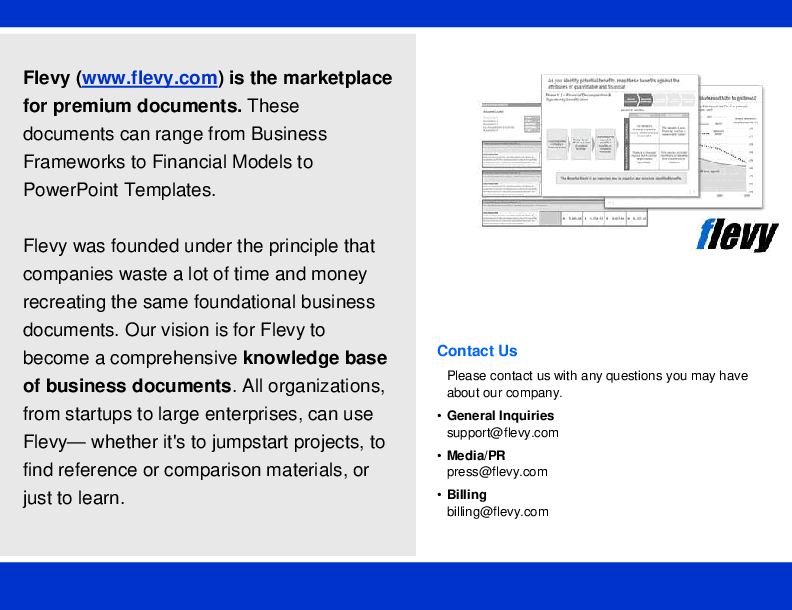Robotic Process Automation (RPA) Opportunities (across Value Chain) (PowerPoint PPTX Slide Deck)
PowerPoint (PPTX) 44 Slides
BENEFITS OF THIS POWERPOINT DOCUMENT
- Provides over 100+ RPA opportunities across the Value Chain, which can lead to significant cost savings and productivity gains.
- Allows you to prioritize your RPA projects by corporate function or formulate a cross-functional RPA Strategy.
- Lay the foundation to your Digital Transformation Program with targeted RPA initiatives.
RPA PPT DESCRIPTION
Robotic Process Automation (RPA) is a technology that uses software robots and Artificial Intelligence to automate repetitive and rule-based tasks that are typically performed by humans, thereby allowing employees to focus on more value-add, strategic work.
RPA not only reduces the need for human intervention in mundane tasks, but also allows organizations to strategically reallocate their human resources towards activities that require human judgment, creativity, and interpersonal skills. This shift can lead to innovation and a stronger competitive position. Furthermore, for employees, it improves job satisfaction and productivity.
For organizations pursuing Digital Transformation, RPA is typically the lowest hanging fruit. RPA opportunities are relatively easy to identify and deploy; and potential results are high impact and easily measurable. RPA allows organizations to digitize and automate processes at a foundational level, setting the stage for more advanced technologies like AI and machine learning, which can further enhance decision-making and operational efficiencies.
Specific RPA benefit areas include:
Cost Reduction – Significantly lowers operational costs by automating routine tasks.
Productivity & Efficiency Gains – Increases workflow speed and productivity by eliminating human error and delays.
Scalability – Facilitates the easy scaling of operations to handle increased workload without additional investment.
Improved Accuracy – Ensures high precision and consistency in task execution, reducing the risk of errors.
Employee Satisfaction – Frees up employees from monotonous tasks, allowing them to engage in more meaningful and strategic activities.
Compliance & Control – Enhances compliance with regulations by providing a clear, consistent, and auditable trail of actions.
This presentation identified over 100+ RPA opportunities across the Value Chain. These opportunities are categorized into 9 functions:
1. Finance & Accounting
2. Human Resource Management
3. Information Technology
4. Procurement
5. Product Development
6. Logistics
7. Operations
8. Marketing & Sales
9. Service
Note these functions are slightly modified from the original Michael Porter Value Chain, so it is better adapted to RPA.
This PowerPoint presentation is organized into these 9 functions. For each function, we delineate a series of RPA opportunities, which includes examples and a quantification of potential impact for each opportunity.
Got a question about the product? Email us at support@flevy.com or ask the author directly by using the "Ask the Author a Question" form. If you cannot view the preview above this document description, go here to view the large preview instead.
Source: Best Practices in RPA, Value Chain Analysis PowerPoint Slides: Robotic Process Automation (RPA) Opportunities (across Value Chain) PowerPoint (PPTX) Presentation Slide Deck, LearnPPT Consulting
RPA PPT SLIDES









